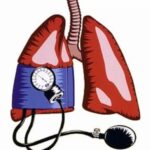While people may think they know what a myocardial infarction is (a heart condition where there is a narrowing of the coronary arteries, causing a heart attack), most people don’t know that the term “infarction” can actually apply to several conditions that can affect the human body.
An infarction actually refers to the death of tissue from an obstruction to the blood supply. This can happen in various organs and locations throughout the body. There is the well-known myocardial infarction, mentioned earlier, which takes place in the arteries of the heart, but a pulmonary or lung infarction can occur when a loose blood clot lodges in a pulmonary artery and cuts off blood supply causing tissue death. Arteries in various other parts of the body can also become blocked by one or blood clots and cause an infarction.
There can be other causes of infarction as well. For example, in the large or small intestines, a section of the intestine can become caught in a pouch or pocket that is created by a hernia, or it may become twisted or knotted and this can cause the blood supply to be affected and cause an infarction in the area.
The severity of the affects of an infarction will normally be determined by the size of the clot or interference to the blood supply, and how much tissue has been affected. Some areas and organs are more sensitive and susceptible to blood loss than others. Some cells can actually regenerate, so the body can replace at least some of what is lost. Other cells, like those of the brain or heart cannot regenerate.
Additionally, infarctions are usually divided into two categories, or types, depending on the amount of hemorrhaging that may be present: Red or hemorrhagic infarctions, are those that affect the lungs. The blockage or clot consists more of red blood cells; White or anemic infarctions usually affect organs such as the heart, spleen, and kidneys. The blockage here contains platelets, and the affected organ becomes white, or pale.
Diagnosis and treatment will depend on the type of infarction or condition an individual is experiencing and what the symptoms are. In many cases, as in with a heart attack or stroke, the infarction will only be diagnosed after the patient has suffered from the condition and extensive damage may already be done. Treatment may include medications, surgery, and physical and occupational therapy depending on the extent and nature of the illness or injury caused by the infarction.
Recovery will depend on the severity and location of the infarction, as well as the age and overall health of the person affected.



